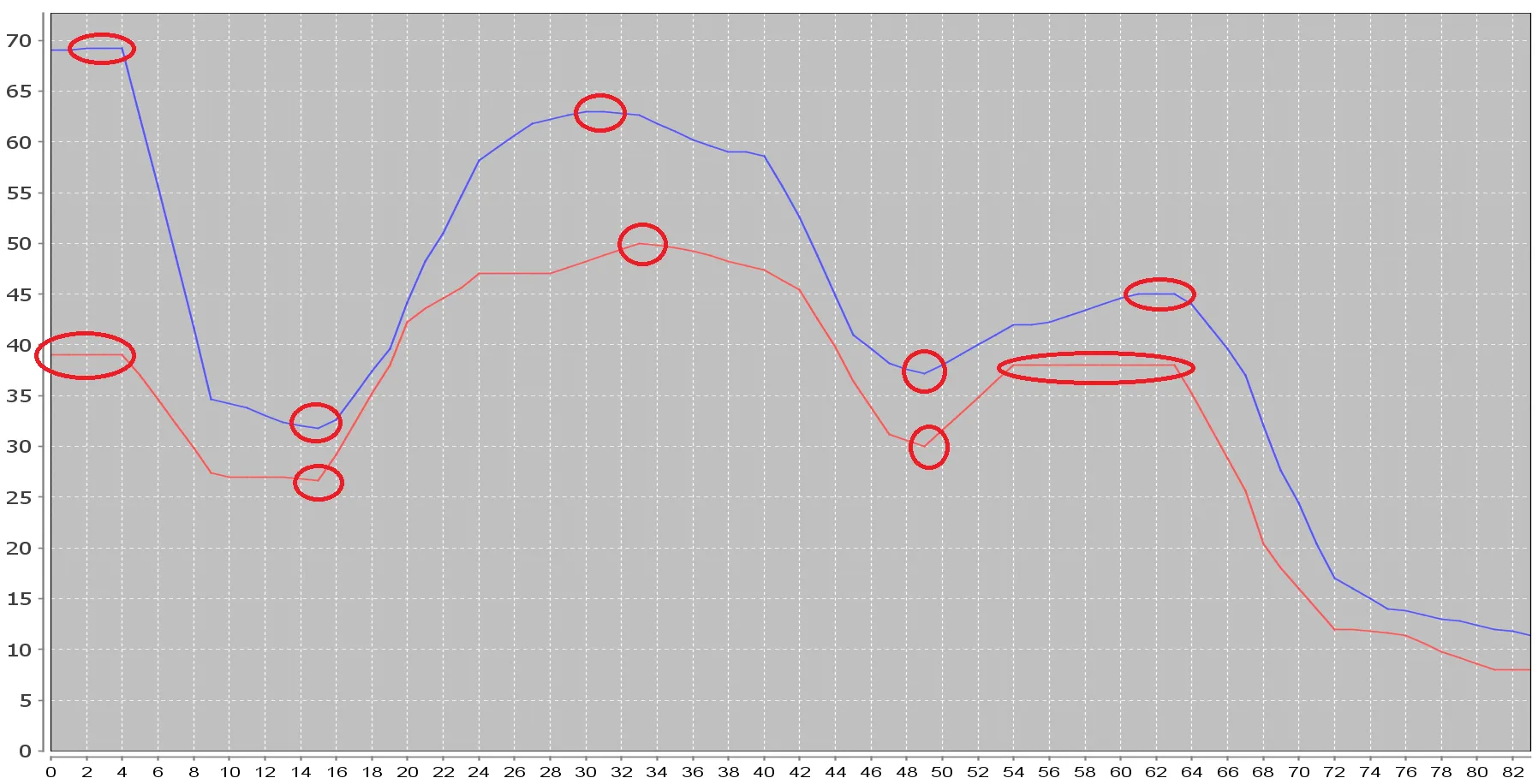我目前正在一个小项目中,想要比较两个时间序列的相似度。相似性测量非常模糊,如果这两个时间序列大致相同,则认为它们是相似的。
所以我想:“如果它们只需要具有相同的形状,那么我只需要比较两个时间序列的峰值,如果峰值位于同一位置,那么这两个时间序列肯定是相似的。”
我的问题现在是找到一种好的峰值检测算法。我用了谷歌搜索,但只找到了这篇论文:Simple Algorithms for Peak Detection in Time-Series。问题在于,该论文中描述的算法适用于极端和尖锐的峰值,但在大多数情况下,我的时间序列具有相当平坦的峰值,因此不会被检测到。
有人知道我可以在哪里找到或搜索能检测以下图像中显示的峰值的算法吗?
